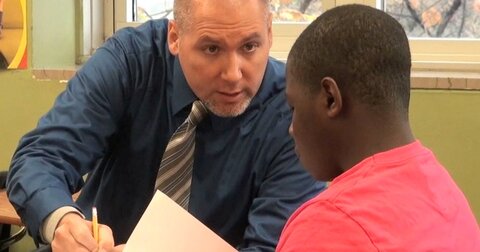Detroit Public Schools Debt Increases By $1 Million Every School Day
Governor pitches $715M bailout plan
The debt load of the Detroit public school district increases by $1 million every school day, according to the co-chair of a coalition trying to help the financially troubled school district.
John Rakolta, the co-chair of the Coalition for the Future of Detroit Schoolchildren, offered this figure on the same day that Gov. Rick Snyder released a new proposal to fix Detroit’s school system.
“As far as the size of the total debt, it’s big, really big and very complex,” Rakolta said in an email. “It has many facets. The debt is increasing by an estimated $1 million per school day. If this isn’t fixed now, it will just grow and create a larger hole to dig out of. There is no magic here. Only heavy lifting can get this done.”
Snyder pitched a plan Monday that would require Michigan taxpayers to ante up $715 million for Detroit schools. Of this, $515 million would go to pay off the school district’s short-term debt, and another $200 million would go to create a new administrative entity to run the city’s schools.
Snyder said the state’s School Aid Fund, the primary funding source for Michigan public schools, would contribute around $70 million a year for 10 years. When the current school district’s debt is retired, the district would be closed and the new entity would assume control of schools.
Rakolta said the state was bailing out itself, not Detroit’s schools.
“This is not a Detroit bailout,” Rakolta wrote. “This is a state bailout of the state. The state managed the expenditures of the money as emergency managers of the district. The state issued the state aid notes and bonds to cover the debt using the full faith and credit of the state. The state decided not to pay MPSERS (state pension system for school employees). The state decided not to pay the vendors. The state continues to manage the district.”
The governor’s proposal requires approval by the state Legislature.
State Sen. Rick Jones, R-Grand Ledge, said it would be tough to get support for a bailout of Detroit Public Schools.
“It’s going to be tough unless we can be shown exactly what it is going to cost if we don’t do it and if it is going to get worse,” Jones said. “Are we on the hook for bailing out a school district that has had bad supervision for decades? We are bailing out a system that is failed. We are going to use money that could go to all the other districts. I’m very disappointed that it would be suggested that Detroit get bailed out at the cost of all the other districts.”
Jones said he held the local school district responsible for its bad financial condition, not the state.
“The superintendent and school board have gotten themselves into this and the state has tried to help,” Jones said.
In regular reports to the state, DPS shows a $238.2 million deficit in its operations budget. (Covering this particular gap between revenues and expenses is how the district is adding the $1 million per day in new debt.) In addition, the Michigan Department of Treasury reports that the district owes $572 million to a state loan authority for money borrowed to cover previous year's overspending.
Both those figures refer to money borrowed to cover routine operating expenses, such as salaries and heating bills — expenses that are supposed to be covered by regular operating revenue the district receives from local, state and federal taxpayers.
But the red ink does not stop there. DPS also owes around $2 billion to bondholders for long-term debt incurred to pay for long-lived assets such as land, buildings and major school infrastructure improvement projects.
Michigan Capitol Confidential is the news source produced by the Mackinac Center for Public Policy. Michigan Capitol Confidential reports with a free-market news perspective.


 Michigan Senate enables state environmental regulations to exceed federal
Michigan Senate enables state environmental regulations to exceed federal
 Whitmer asks for ideas to grow Michigan
Whitmer asks for ideas to grow Michigan
 Whitmer admits education system failing despite increased spending
Whitmer admits education system failing despite increased spending

 Electric vehicle transition kills hundreds of jobs at GM
Electric vehicle transition kills hundreds of jobs at GM
 State Board of Ed seeks ‘constitutional clarity’ on second Michigan department of education
State Board of Ed seeks ‘constitutional clarity’ on second Michigan department of education
 ‘Not effective’: 4% of school contract employees never fingerprinted, says Michigan Auditor General
‘Not effective’: 4% of school contract employees never fingerprinted, says Michigan Auditor General